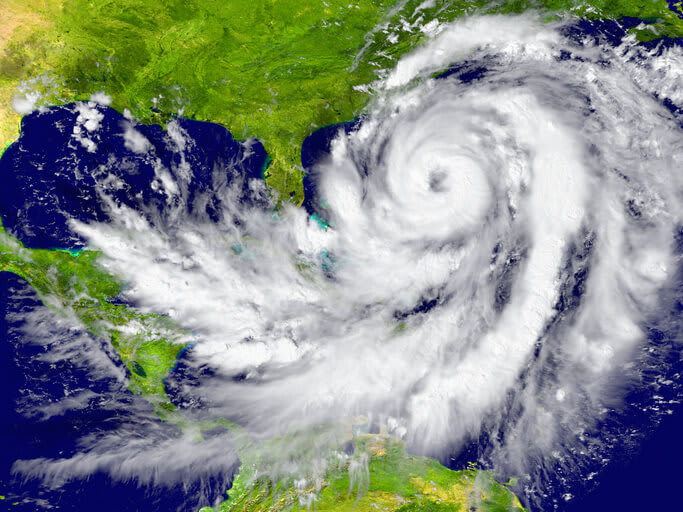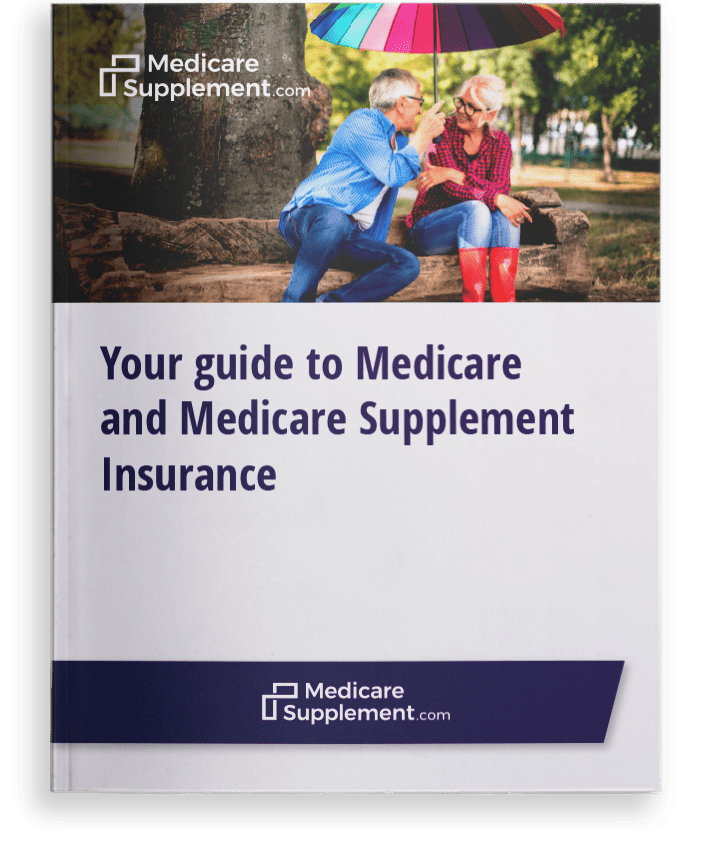Are You Prepared?
There’s little that can be done to prevent an emergency or disaster situation. But there’s plenty you can do to prepare for such events. Staying safe in inclement weather and natural disasters begins with a proactive approach that every household can adopt.
Below is a guide for disaster and emergency preparedness that can help keep you, your loved ones and your possessions safe from harm.
For at-home use, download the Family Emergency Action Plan [PDF Guide] and Spanish Version [PDF Guide], which includes pages of emergency information forms for safekeeping.
Emergency Kit Prep
The first thing you can do to prepare for any disaster situation is to assemble an emergency preparedness kit.
Your kit should be stored in a safe but easily accessible place in a waterproof container that contains the following items:
- Flashlights
- Radio
- Extra batteries
- Bottles of water
- Non-perishable foods that require no cooking or heating
- First aid supplies
- Warm clothing (jackets, hats and mittens) and blankets
- Matches and lighters
- Basic tools, such as a hammer, pocket knife and screwdriver
- Essential hygiene items
- Copies of house and car keys
- Some spare cash
- A tent or tarps
- Fire extinguisher
- Extra cell phone charger
- Essential medications
Please note that this is not an exhaustive list of items you may need in your emergency kit. You should think about the things you would require in a true emergency and include them in this kit, even if they aren’t on this list.
For a quick video on what to pack, see the following video from the American Red Cross:
Emergency Action Plan
Another critical step in preparing for an emergency is having an action plan in place. All family members may not be together when a disaster strikes or may become separated during such an event. An action plan can help family members reconnect in the immediate aftermath of a disaster. Consider the following things to include in your plan:
- Determine a meeting place within a short walking distance of your home to serve as a rallying point. This could be a friend or relative’s home or a public place such as a park or retail store.
- If you have any relatives who live far away (and therefore likely out of the disaster area), make a plan for each member of the household to call that relative and check-in following a disaster. That relative can let each caller know who else has called and update them on their whereabouts.
- Have each member of the household keep an emergency contact card with them at all times. This card should include the phone number of the designated check-in person as well as phone numbers for other household members, local police and fire departments. Keep in mind that damaged cell phone towers may prevent cell phone calls in the aftermath of a disaster. Relying on contact information stored in cell phones is not enough as phones can be easily lost or destroyed during a disaster.
- Teach children how to dial 911 and periodically quiz them on your family’s emergency action plan.
- Demonstrate to all household members the proper way to shut off the water, gas and electricity at the home’s main shut-off locations.
- Teach each household member how to use a fire extinguisher and show them where it is located.
- Plan evacuation routes for every room of the house and periodically practice those routes with every member of the household.
Types of Disasters
Hurricanes and Tornados

Hurricane season officially lasts from June through November, while tornado outbreaks are most prominent from March through June. A hurricane or tornado can come with little warning, but the right preparation can mean there is more time to prepare than you think. Take the steps below to make sure you’re always ready for such a storm.
- If you live near a coast that is subject to hurricanes, it’s important to know the possible evacuation routes. Find out what they are and keep a copy of the directions in your car along with a list of possible places to stay.
- Many cities and towns have emergency alert systems that can notify and update you of disasters through text messages. Find out if your area has such a service.
- Prior to hurricane season, trim any excess branches and limbs from trees in close proximity to your house. This kind of debris can be dangerous and even deadly during high winds.
- Make sure rain gutters and downspouts are tight and secure.
- Install a generator or purchase a portable one as hurricanes and tornados can leave you without power for days or even weeks.
- If you live in an area prone to tornados, construct a storm shelter or outfit a basement to act as one.
During a Hurricane
An evacuation is the best defense against a hurricane and you should always evacuate the area if local authorities have advised you to do so. However, if you do decide to stay put, there are some things you should adhere to.
- Always stay indoors and away from windows, skylights and glass doors. Find an interior room on ground level such as a bathroom or closet and hunker down.
- Turn off your electricity at the main breaker to reduce the risk of fire.
- Stay inside well after the storm has passed. You may just be in the “eye” of the hurricane and more heavy winds could be on the way. Additionally, there can be hazards waiting for you outside such as downed power lines, heavy flooding, sharp debris and more.
During a Tornado
Taking the right precautions during a tornado can greatly increase your chances of survival.
- Close all windows and doors.
- Seek cover in a storm shelter, basement or interior room on the lowest level of your home.
- Keep a portable radio handy for the latest weather updates.
- Cover your head and eyes with a blanket or jacket to protect against flying debris.
- Multiple tornados can emerge from the same storm, so remain inside until well after the initial tornado passes.
Winter Storms
A heavy accumulation of snow or ice can bring down trees and power lines, trap residents inside their homes for extended periods, freeze water pipes and knock out access to heat and electricity. Here’s what you can do to prepare:
- Make sure you have some rock salt and sand at the ready to help melt ice and improve traction on walkways.
- Keep a steady supply of dry, seasoned wood for use in a fireplace or wood-burning stove in case you lose heat in your home.
- Winterize your home by installing storm doors and windows or covering windows with plastic. Insulate walls and attic spaces to extend the life of your heating fuel supply.
- Insulate pipes to protect against freezing.
Preparing Your Car
Winter storm preparation shouldn’t stop with your home. Becoming trapped in a storm while on the road can present an extremely dangerous situation. Be sure to have the following items packed in your car during winter:
- Flashlight
- Battery-powered radio
- Extra batteries
- Non-perishable snack foods
- Hats, socks, mittens, jackets and blankets
- Tow chain or rope
- Jumper cables
- Emergency flares
- First aid kit
- Small shovel
- Snow chains for tires
During a Winter Storm
Remain inside during a winter storm and follow these suggested guidelines:
- Instead of turning up the thermostat, dress warmly and in layers. A severe winter storm can linger for days and place a heavy strain on gas, electricity and the heating mechanisms themselves. To conserve heat, close off unused rooms and cover windows with blankets, cardboard or plastic.
- Eat regularly as food provides the body with energy to create its own heat.
- Stay tuned to local television and radio stations for updates on conditions.
- Remain hydrated while avoiding caffeine and alcohol. Caffeine can accelerate the symptoms of hypothermia while alcohol slows circulation and can make you less aware of the effects of the cold.
Floods
Suburban sprawl has heightened the risk of homes being affected by wildfires, which can be set by discarded cigarettes butts, fireworks, campfires, lightning and even just heat from the sun. Because a wildfire can start at any moment, and because they can spread so quickly, anyone who lives in or near a wooded area should be prepared for such an event.
- When landscaping your property, use materials that can contain rather than fuel fire. Plant hardwood trees and shrubs as opposed to highly-flammable pine, evergreen, fir or eucalyptus trees.
- Keep your roof and gutters free of leaves, pine needles and other debris.
- Surround the underneaths of decks, porches and patios with a mesh screen to prevent a buildup of leaves and debris.
- Keep items such as tables, chairs, tarps, firewood and other flammable objects a safe distance from your home.
- Remove branches and limbs that extend over the top of your roof and any vines attached to the outside of your home.
During a Wildfire
- Shut off any natural gas, propane or other fuel sources at the main breaker.
- Move all flammable furniture toward the center of the house and away from windows and doors.
- Remove all drapes and curtains.
Earthquakes
An earthquake is arguably the most difficult disaster to prepare for because they happen suddenly with no advance signs or warnings. Preparing for an earthquake largely involves preparing your home.
- Have heavy items such as bookcases, china cabinets, appliances and water heaters attached to walls with bolts and braces.
- Avoid hanging heavy pictures or mirrors above beds should an earthquake strike in the middle of the night.
- Avoid storing heavy pots, pans and other kitchen items on high shelves.
During and After an Earthquake
- Pick the safest spot for cover in every room of the house. Unlike other types of disasters, you do not have time to move to another location of the house during an earthquake. The safest spots are underneath tables and desks or within door frames.
- Have every household member learn and practice Drop, Cover and Hold On.
- If you smell gas, immediately leave the house and move as far away from it as possible.
- Be prepared for aftershocks and execute a Drop, Cover and Hold On for each one.
Disaster Recovery
As soon as a disaster is over, the recovery process should begin.
- Check yourself for injuries first before attending to others.
- Do not attempt to move seriously injured victims unless they are in immediate danger. If you must move an unconscious person, be sure to stabilize their head and neck.
- Use blankets or jackets to help victims maintain their body temperature but be careful they don’t become overheated.
- Never try to feed liquids to an unconscious person.
- Navigate your surroundings carefully and be on the lookout for broken glass, damaged electrical wiring and spilled contaminants. If possible, put on boots, gloves and long-sleeved clothing before entering a debris pile.
- A home may be dangerous even if it does not appear to be damaged. Electrical appliances may be wet, wires may be frayed and live with electricity, gas may be leaking and the foundation may be dangerously cracked and compromised. Take precaution when opening any cabinets as the items inside may have shifted.
Child Safety

People with children have an additional responsibility during a disaster. Children are not always able to take the same precautions as adults and there are some tips that parents or guardians can follow to keep children safe.
The most important thing parents and guardians can do is to make children feel safe, even if the reality of the situation says otherwise. Remain calm no matter the circumstances as children can pick up on stress and anxiety.
- Make sure children are able to memorize their address as soon as possible in case they become separated during a disaster.
- Teach children about the different types of natural disasters and what to expect in each event.
- Involve children in your disaster preparedness by giving them small tasks to complete such as counting the number of bandaids in your first-aid kit. By making them feel included during preparation, they can feel a greater sense of control during a disaster.
- Have your family periodically practice for different disaster scenarios and make things fun by timing it and keeping a record of the best times for each scenario. Not only will it keep children invested and engaged in disaster preparation, but practice makes perfect.
Disabled Persons and Senior Safety

Just as with children, it may take some extra preparation to keep those with disabilities and older adults safe from disasters. The first thing to consider is how quickly the person might be able to reach a safe shelter or evacuate the home if necessary. Based on this evaluation, you may consider preparing multiple rooms of the home so the person always has a nearest option.
- Make emergency contact cards that people with disabilities and seniors can carry with them, particularly during a time of emergency. These cards can contain information about medications the person is taking, their blood type, any allergies they may have along with any disabilities or speech or hearing impairments. Because people with disabilities and seniors may have a harder time memorizing phone numbers, these cards should also contain the phone numbers of relatives and local emergency personnel.
- An automated external defibrillator (AED) should be kept in the home of older adults as the stress and fear of a disaster situation can trigger heart malfunctions.
- If someone receives in-home care from a professional agency, find out how the agency responds to disaster situations.
- Make prior arrangements with a neighbor to check in with an older or disabled person following a disaster.
- If a person uses a motorized wheelchair, it’s a good idea to keep a manual wheelchair as a backup during a disaster. The homes of all wheelchair users should have ramps exiting the home in multiple locations to provide ample evacuation options.
- Extra hearing aid batteries, canes and glasses should be kept on hand for those who use such devices.
- The disaster kit for a household with people with disabilities or seniors should be customized to reflect those needs. Extra doses of medications and copies of Medicare and Medicaid cards should be included along with anything else that may further accommodate the person’s needs.
- A prepaid emergency cell phone with instructions for use is a smart thing to keep in a disaster kit. It may also be wise to consider a medical alert necklace in case a senior or disabled person becomes immobilized during a disaster.
Pet Safety

Don’t forget about your furry friends in a time of disaster. There are a few things you can do to prepare your pet for a disaster.
- If you have a pet, your emergency kit should contain some extra items including a leash, some food, any extra medications they require, the contact information of your veterinarian and the nearest animal hospital.
- Many emergency shelters do not accept pets because of health and safety concerns. Know which hotels either accept pets or will make such an exception during an emergency.
- A portable and easy-to-carry pet carrier should be kept on hand as pets can be difficult to transport during a hurried evacuation.
- Make sure your pets wear collars at all times with updated contact information and consider having your pet microchipped.
- Form a buddy system with a neighbor who also has pets where you can evacuate or shelter each other’s pets if disaster strikes when one party is not home.
- Research some veterinary facilities outside of your immediate area. In the event of a disaster, your local animal hospital may be closed so you’ll need to know an alternative location to visit.
- Just like children, pets need extra comfort and attention during a disaster. A frightened or stressed pet is more likely to run away, which can place them in greater danger during a disaster.
Important Emergency Terms
When listening to a television or radio for updates on weather conditions, it helps to know the terminology involved.
- A watch is issued when conditions are favorable for the development of severe weather.
- A warning is issued when severe weather or a storm is detected by radar or reported by storm spotters.
- An advisory is a statement issued by the National Weather Service to alert the public to a weather event that is not expected to reach a “warning” level but may still cause significant damage or harm.
- A slight risk means a weather event may affect between two and five percent of the area.
- A high risk means a weather event may affect more than 10 percent of the area.
- A severe thunderstorm is defined by winds of at least 58 mph and/or hail measuring at least one inch in diameter. A severe thunderstorm has the potential to spawn tornados.
Each state has resources designed to aid residents with disaster preparation and recovery efforts specific to each location, so it’s a good idea to familiarize yourself with these resources. Remember, preparation is your best defense against a disaster.
Additional State Resources
Alabama
- Alabama Emergency Management Agency
- Alabama Emergency Communications Resources
- Disaster Relief and Emergency Assistance: Alabama
Alaska
- Alaska Emergency Communications Resources
- Alaska Department of Health and Social Services
- Alaska 211
Arizona
- Arizona Emergency Information Network
- Arizona Emergency Communications Resources
- Disaster Relief and Emergency Assistance: Arizona
Arkansas
- Arkansas Emergency Communications Resources
- 211 Arkansas Disaster Assistance
- Arkansas Emergency Response Resources
California
Colorado
Connecticut
- Connecticut Emergency Communications Resources
- Connecticut Guide to Emergency Preparedness
- Connecticut Recovers: Resilience Resources
Delaware
- Delaware Family Voices
- Delaware Emergency Communications Resources
- Delaware Disaster Assistance Team
Florida
- Florida Health: Emergency Response System
- Water Restoration Group: Emergency Resources
- Volunteer Florida: Emergency Management
Georgia
Hawaii
- Hawaii Emergency Communications Resources
- Hawaii Emergency Management Agency
- American Red Cross Disaster Preparedness
Idaho
- Idaho Emergency Communications Resources
- Idaho Emergency Response Resources
- Idaho Office of Emergency Management
Illinois
Indiana
Iowa
- Iowa Emergency Communications Resources
- County Emergency Management Overview
- Iowa DNR: Disaster Assistance
Kansas
- Kansas Emergency Communications Resources
- League of Kansas Municipalities: Disaster Resources
- Kansas Department of Health & Environment: Disaster Recovery Info
Kentucky
- HUD: Disaster Relief and Emergency Assistance: Kentucky
- Kentucky Emergency Management
- Kentucky Emergency Communications Resources
Louisiana
- Louisiana Emergency Response Resources
- The Episcopal Diocese of LA: Resources for Emergency Preparedness & Response
- Louisiana Emergency Preparedness Guides
Maine
- Division of Environmental Health: Emergency Response Resources
- Maine Emergency Communications Resources
Maryland
Massachusetts
- Mass.gov: Emergencies and Disasters
- Massachusetts Emergency Communications Resources
- Health & Human Services: Emergency Preparedness Resources
Michigan
- Michigan Emergency Communications Resources
- Michigan Emergency Response Resources
- Division of Emergency Preparedness & Response
Minnesota
- Local and Community Disaster Recovery Resources
- University of Minnesota Extension: Disaster Recovery
- Minnesota Emergency Communications Resources
Mississippi
- Mississippi Emergency Communications Resources
- Mississippi Emergency Management Agency
- Mississippi State Department of Health
Missouri
- Department of Public Safety: Assistance Resources
- Missouri Emergency Response Resources
- Missouri Emergency Communications Resources
Montana
- Montana Emergency Communications Resources
- Natural Resources & Conservation: Disaster & Recovery
- Ready & Safe
Nebraska
- University of Nebraska Extension: Disaster Recovery Resources
- HUD: Disaster Relief and Emergency Assistance: Nebraska
- Nebraska Emergency Response Resources
Nevada
- Nevada Emergency Response Resources
- 211 Disaster Services
- HUD: Disaster Relief and Emergency Assistance: Nevada
New Hampshire
New Jersey
- Office of Emergency Management
- New Jersey Emergency Response Resources
- NJ Emergency Communications Resources
New Mexico
- NM Department of Homeland Security & Emergency Management
- NM Disaster Mitigation
- NM Emergency Communications Resources
New York
- New York City Disaster Response Agencies and Organizations
- NY Emergency Response Resources
- NY Emergency Communications Resources
North Carolina
- Ready NC
- HUD: Disaster Relief and Emergency Assistance: North Carolina
- NC Health & Human Services: Disaster Preparedness
North Dakota
- County/tribal Emergency Management
- Disaster Recovery Resources for North Dakota Families
- ND Emergency Communications Resources
Ohio
- Society of American Archivists
- HUD: Disaster Relief and Emergency Assistance
- Ohio Emergency Response Resources
Oklahoma
Oregon
- Drought and Disaster Resources
- HUD: Disaster Relief and Emergency Assistance: Oregon
- Oregon Office of Emergency Management
Pennsylvania
- Pennsylvania Emergency Management Agency: Disaster Assistance
- Pennsylvania Emergency Management Guide
- Pennsylvania Emergency Communications Resources
Rhode Island
South Carolina
- SC.gov: Emergencies & Disasters
- SC Emergency Management Division
- HUD: Disaster Relief and Emergency Assistance: South Carolina
South Dakota
- Department of Public Safety: Emergency Management
- SD Emergency Response Resources
- HUD: Disaster Relief and Emergency Assistance: South Dakota
Tennessee
- Department of Health: Local & Regional Resources
- HUD: Disaster Relief and Emergency Assistance: Tennessee
- TN Realtors: Resources for Disaster Relief
Texas
- Disaster Relief Resources: Individuals and Families
- State Bar of Texas: Disaster Relief Resources
- TX Health & Human Services: Emergency Preparedness
Utah
- Be Ready Utah
- Utah Disaster Cleanup, Mold Remediation & Water Damage Resources
- Utah Emergency Communications Resources
Vermont
Virginia
- VA Department of Emergency Management
- VA State Bar: Disaster Resources
- VA Emergency Response Resources

